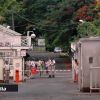
“Lifestyle loads the gun and the environment pulls the trigger.” My interpretation of this quote is that whoever loads the gun, the environment is definitely going to pull the trigger, each and every time we cross the limits. We have already gone beyond all limits, so beware, floods are not going anywhere. We have to live with them, so better be prepared.
Publicité
It was heartbreaking to see images of houses full of muddy water, a devastated woman standing in that water with swollen eyes due to too much weeping and who didn’t know from where to start cleaning. Another picture showed a bunch of kids who were clueless about why and how water entered their clean and comfortable house and subsequently disturbed their lives.
It was not the story of one house and one family. Hundreds of houses were overflowing with dirty water during cyclone Berguitta and its recent heavy rains. Normally water is considered as a life source, but there are times when water teaches us that we should not play with nature, or else, the results can be disastrous. A couple of weeks ago, floods gave a strong message to the whole of Mauritius, so we better be prepared.
Every year, a community in some part of the world is devastated by catastrophic flooding. As cities grow, floods become more frequent because urban infrastructure cannot accommodate the flood water. Highly developed areas like Port Louis have no space to evacuate their floods other than roads.
Making matters worse, the natural areas that help protect our communities are declining day by day. Earlier, I was able to tell where St Pierre ends and Circonstance starts and where Circonstance ends and L’Avenir starts, because of sugarcane fields between these villages. But due to recent heavy constructions, only sign boards are able to inform us about the borders of all these villages.
Reasons
Every Mauritian remembers the black day of March 30th, 2013, When 11 people died due to intense floods in Port Louis. Flash floods bore the blame because 152mm of rain fell in less than an hour. But has anyone ever thought why all the water converges on roads nowadays?
The main reason is that there is no land in many areas to accommodate the water. Everywhere there are constructions mushrooming. There are still lots of parks and plantations in Mauritius but the speed with which individual houses are being erected and the partition of land (morcellement) in Mauritius had also played a huge role in these flood damages.
Holiday homes
According to recent business trends, people have invested heavily to buy holiday homes near the beaches for renting purposes. I personally think that that this is fine as a business investment. But still, there are so many people who buy houses just for investment.
They neither occupy nor rent these houses. Those who purchase these properties just for investment should buy lands instead of constructed houses because land is easy to resell than built-up houses, suggest the property dealers.
Measures to avoid flooding
So, it is clear that we can’t completely prevent flooding because they are here to stay, but we can surely avoid them with a few measures taken in advance. Conventional defences had to be supplemented with more innovative methods:
Responsibilities for individuals
- Build smaller houses. They are easier to clean, families can stay close, then construct a second floor for privacy. Green space is good for people and environment as well.
- Mauritians should construct all new buildings one metre from the ground to prevent flood damage.
- Move all electric sockets higher up the walls to increase resilience.
- Introduce plants or trees strategically at home. Select those plants which absorb a lot of water if you live in a flood prone area.
- Prepare temporary barricades to avoid sudden entry of water in the house.
- Connect your terrace water pipe into drainage system rather than leaving it to flow on roads.
Steps to be taken by Government
- Increase spending on flood defences. Studies have found that for every $1 spent on flood mitigation efforts, $5 is saved. It is well said in the context of Mauritius because recently, we have seen how schools and offices were closed due to heavy rains, which directly affects the economy.
- Protection of wetlands which can act as sponges, soaking up moisture areas can slow down waters when rivers overflow.
- Introduce plants or trees strategically at beaches and public places.
- Reintroduction of canals- the main effort that will surely bring results is reintroducing canals in sugarcane fields, which are concrete instead of making bridges to drive over. These canals have historically improved navigability. Increasing the length of rivers in form of canals can delay and reduce the impact of flooding downstream.
- Temporary barriers can also be added to permanent flood defenses, such as raised embankments, increasing the level of protection. These can be removed completely when waters recede.
Help of technology
Architects and civil engineers have developed promising technologies for flood control. Mauritius should also work with specialists to create a design which can be feasible for the island. A few examples of technological tools to prevent flooding around the world are:
- The Thames Barrier in England
- Watergates in Japan
- Eastern Scheldt Storm Surge Barrier in the Netherlands
- The Maeslant Storm Surge Barrier in the Netherlands
Land use planning
Efficient land use is a major concern for Mauritius due to limited land size, its already relatively high population density of 630 per km² and its economic growth. Built-up areas are estimated to cover about 20% of the land in Mauritius.
Citizen’s responsibility
Sukhai Satyajeetsingh of Montagne Blanche, who is also working in the construction field, says: “Our grandparents used to build small houses but have big yards where they built a kitchen garden with lots of medicinal plants. But nowadays people prefer a big house with small yard which have more decorative plants.”
Sarika Sharma states, “I don’t understand that when the population of Mauritius is not increasing, then why the numbers of houses are increasing so rapidly. Who are living in them? People possess two to three houses nowadays.”
Another citizen, Sahdeo Dorkee declares, “We have very little land, so stop building big houses if they are not really needed and stop buying new houses if you are not going to use them. Show some responsibility. It is not always the Government that should think about the future of the nation. Individuals have to play their roles responsibly.”
Bio
 Savita Tiwari is a freelance journalist exploring Mauritius in all possible ways. She loves to write on every subject under the sun. Education and Children are her favourite topics.
Savita Tiwari is a freelance journalist exploring Mauritius in all possible ways. She loves to write on every subject under the sun. Education and Children are her favourite topics.
You can contact her on facebook/savitapost
Mail: savitapost@gmail.com
By Savita Tiwari

Notre service WhatsApp. Vous êtes témoins d`un événement d`actualité ou d`une scène insolite? Envoyez-nous vos photos ou vidéos sur le 5 259 82 00 !




















